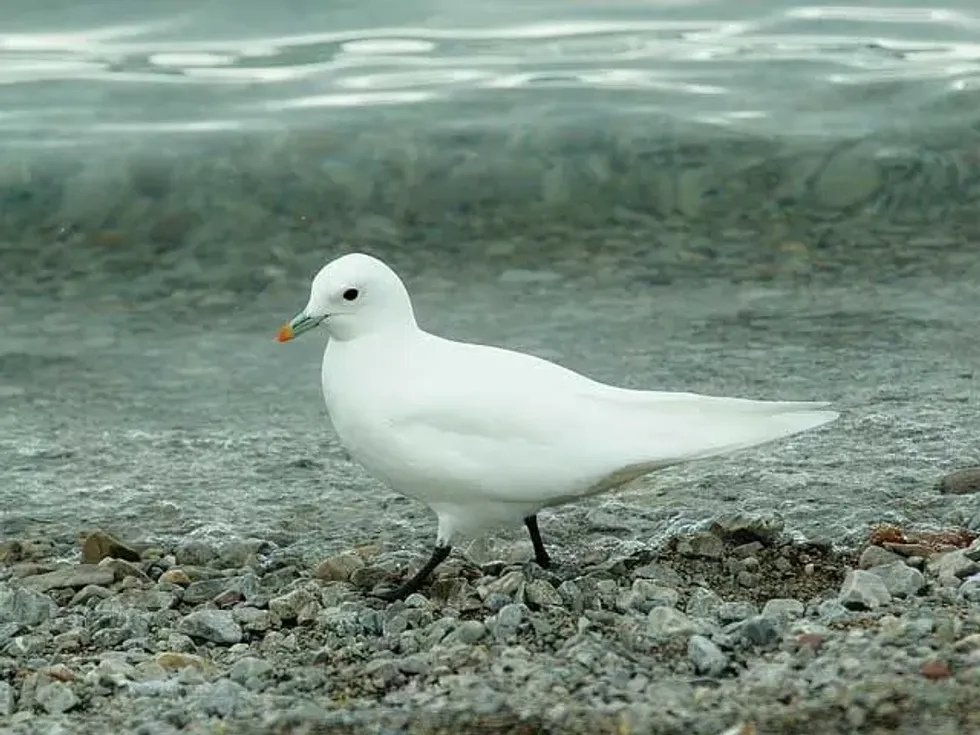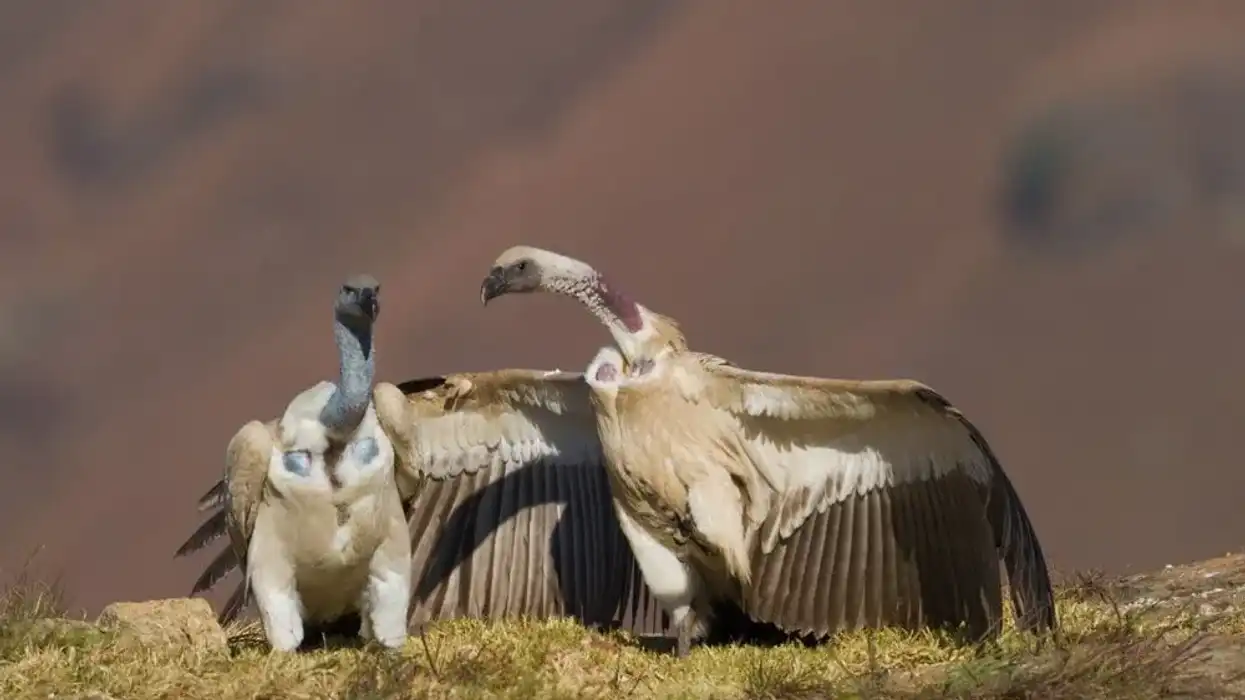Bird with all-white feathers quickly catches attraction and would be a bird watcher's favorite. Have you seen a rare polar seabird, which is also one of the world's few all-white birds?
In contrast to its beauty, you can spot them above a polar bear or a seal waiting to feed on their leftovers for their next meal! Yes, it is the ivory gull.
The beautiful and spectacular arctic gull, ivory gull (Pagophila eburnea), stands apart from all other seabirds as the lone representative in the Pagophila genus of the Laridae family. The word Pagophila means lover of sea ice, and Eburnea means ivory-colored.
These stocky ivory gulls looking like an odd white pigeon are endemic to the high Arctic, the land of polar bears, and always restricted to icy areas.
If you like this article, check out crowned eagle facts and birds of paradise facts.
Ivory Gull Interesting Facts
What type of animal is an ivory gull?
The ivory gull (Pagophila eburnea) is an all-white seabird. These gulls spend their entire life in the high arctic sea ice habitat for feeding, breeding, and wintering.
What class of animal does an ivory gull belong to?
Ivory gulls belong to the Aves class in the family Laridae. It is the only species in the Pagophila genus due to its unique differences from other similar species.
How many ivory gulls are there in the world?
As of 2012, the world population of ivory gulls is around 19,000 to 27,000 birds, of which the majority were in Russia. However, their population is decreasing since 1980. High levels of food contaminants, climate change, and degradation of their nesting areas are the main conservation concerns.
Where does an ivory gull live?
Ivory gulls are endemic to the farthest northern reaches of the high Arctic and have a circumpolar distribution through Greenland, Eurasia, and northernmost North America. The bird breeding colonies are scattered and found in Svalbard, New Siberian Islands, Canadian Arctic, Ellesmere, Cornwallis, Devon, and Nunavut but not in Alaska.
They winter from October mainly around the north Baffin Islands, Davis Strait, Labrador Sea, southeast Greenland, and the Bering Strait area.
What is an ivory gull's habitat?
These graceful gulls inhabit pack ice, and the ice edges around islands. Their habitat is not far from sea ice, including drift ice, ice pans, and in winter near a polynyas-a large area of open water surrounded by sea ice.
The species usually nest on the ground or banks of smaller streams, on cliff edges, islands, floating ice, and stone ridges located nearby ice caps. Their habitat throughout the dark winter is pack ice or near its edges and near mammals such as seals or polar bears.
Who does ivory gull live with?
Ivory gulls are gregarious birds and like to hang around in large groups. They nest in big colonies, especially during the breeding season. A group of gulls is referred to as a colony. The biggest nesting colony is believed to be in Russia, with approximately 4,500 breeding pairs.
How long does an ivory gull live?
The average lifespan of these seabirds is around 10-20 years.
How do they reproduce?
Ivory gulls are monogamous birds breeding near sea ice. Their breeding season varies with location from late March in Svalbard to late May in Canadian Arctic and North Greenland.
The nest is like a shallow cup lined with moss, debris, lichens, seaweed, or feathers. Both males and females build it on the ground. They breed in up to 60 pairs within the nest colonies.
The female lays one to three brown or olive-colored eggs with dark spotting and blotching, and both parents take turns incubating them for around 25 days. Then, both parents feed and brood the young in the nest until they fledge about seven weeks after hatching and attain sexual maturity in their second year of life.
What is their conservation status?
The IUCN listed the ivory gull's conservation status as Near Threatened. The reduction of pack ice in the Arctic due to climate changes is likely to be the main cause of their population's further decline.
Ivory Gull Fun Facts
What do ivory gulls look like?

The adult ivory gull can be easily identified by its pure white plumage. They have a pale blue-green bill with a yellow tip, black eyes, and webbed black legs.
The bird's bill is tipped with red during the breeding season, and their eyes have a bright red eye-ring.
The juvenile or young birds have a dusky gray bill and variable amounts of black speckling on the tip of the wing and tail feathers; it takes two years for the young to attain full adult plumage. The male and female look similar, and also, there is no difference in the appearance of the species across their geographic range.
How cute are they?
The gleaming ivory gulls look cute and plumpy with snowy white plumage. Their thin pale blue bill with a yellow tip and black legs make the overall look pretty delightful.
How do they communicate?
The ivory gull communicates through different calls like grating kriiaah, piercing kree-kree, and some whistling psieooe. The bird also makes other calls like a warbling fox-call when threatened by their potential predators such as an Arctic fox, a Glaucous gull, or a human near their nest. During breeding, the female bird makes a plaintive begging call accompanied by head-tossing.
How big is an ivory gull?
The Ivory gull is a medium-sized bird, measuring around 16-17 in (41-43 cm) in length with a wingspan of 42.5-47 in (108-120 cm). Compared with similar species, these birds are smaller than an Iceland gull and bigger than a Bonaparte gull.
How fast can an ivory gull move?
The exact speed of the bird is unclear. However, they have a fast, graceful, and agile flight, which is wonderful to watch. They forage marine crustaceans by surface-dipping while flying.
How much does an ivory gull weigh?
An adult ivory gull weighs about 16-24 oz (454-680 g).
What are their male and female names of the species?
The male and female names of this particular species are not known. But generally, a male gull is called cock, and a female gull is called a hen.
What would you call a baby ivory gull?
A baby ivory gull is called a chick.
What do they eat?
The ivory gulls are carnivores and also have diverse feeding habits. Their diet includes marine life like crustaceans, small fish and feed on carrion, eggs, small chicks, and rodents.
Also, they feed on the fecal matter of seals, polar bears, and carrion left on the ice by polar bears. Due to these feeding habits, these birds are often referred to as scavengers.
Are they poisonous?
These birds are not poisonous, but as per recent research, it is found that toxic forms of mercury due to pollution affecting the Arctic atmosphere and then ingested by these Ivory gulls posing a severe threat to their population.
Would they make a good pet?
Attempting to keep this bird as a pet is not possible as they are rare birds from the far north habituated to sea ice, and it is also illegal to keep them as pets.
Did you know...
In Newfoundland, ivory gulls are also referred to as slob gulls as they slightly resemble ptarmigan; in the local language, slob means drift ice.
Why is the ivory gull endangered?
The ivory gull is an endangered bird, and its conservation is the primary concern compared to other gull species. Their number is gradually declining due to various threats like climate change, illegal hunting, disturbance at colonies, oil spills at sea, toxic pollutants, and heavy predation during the nesting period.
Particularly in Canada, the number of birds is reported to be only about 500 -700.
Are they predators?
The ivory gulls are hunters aggressively striving over food; they prey on fish, squid, rodents, small crustaceans, and sea squirts. However, their diet also includes the droppings of other animal's, carrion, and garbage.
Here at Kidadl, we have carefully created lots of interesting family-friendly animal facts for everyone to discover! Learn more about some other birds from our black-capped gnatcatcher facts and giant kingfisher facts pages.
You can even occupy yourself at home by coloring in one of our free printable ivory gull coloring pages.









